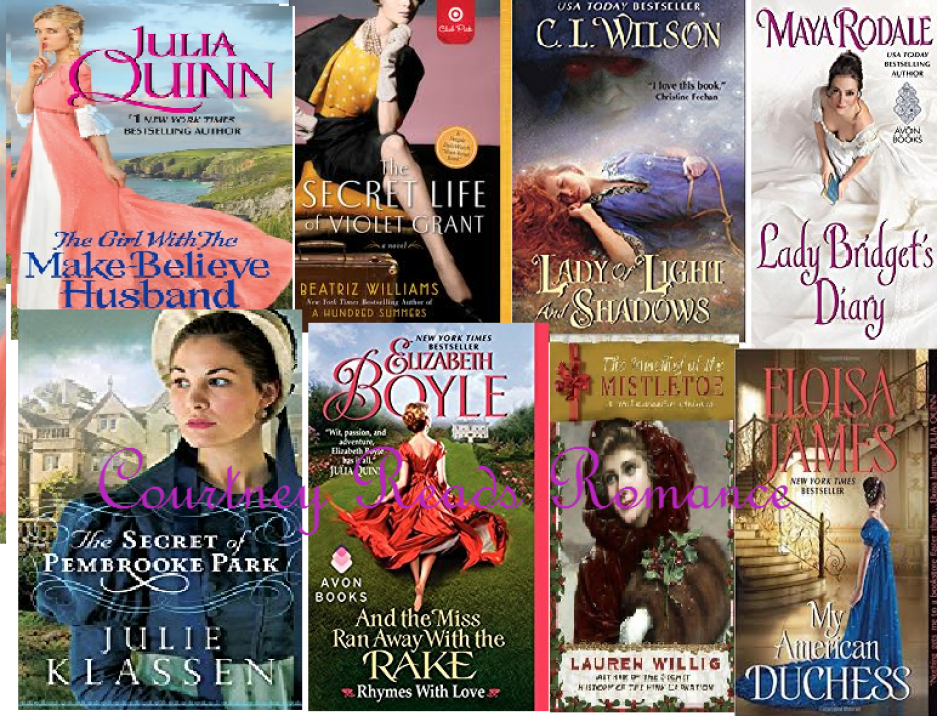Kleypas, Lisa, et. al. A Christmas to Remember. New York: Avon Books. 2017. ISBN-13: 978-0-06-274723-5. Print List Price: $7.99.
When I heard about these stories being released in an omnibus anthology, I was thrilled, as the original methods of release for the most part have been through Avon’s digital-first Impulse imprint, which are not always accessible to paperback readers (with the exception of “I Will,” Kleypas’ contribution, which had previously appeared in the Wish List anthology in 2001). But as is often the case with anthologies, it is a mixed bag in terms of quality.
I Will by Lisa Kleypas (2001) (Capital Theatre 2.5)
3 stars
This story predates most of what I have read from Kleypas up to this point, with my earliest reading experience with her being the Wallflower series. And while I did find this story charming, including the fact that the hero Andrew, Lord Drake, shows real evolution, as well as a vulnerability behind his rakish antics, it is by no means a perfect story. There were several bits that I felt would have had more gravitas if we were shown what happened instead of told, particularly in terms of Julianne. We get told what an awful person she is, but I can’t recall seeing much of her, and even the final confrontation that is meant to happen between her and Caroline towards the end.
Deck the Halls with Love by Lorraine Heath (2012) (The Lost Lords of Pembrook 2.5)
3 stars
This is a story I feel I would have enjoyed a lot more if I had invested in the series prior to reading this one. While you do get a sense of what happened between all of these people, there does seem to be a lot missing when they refer to Chetwyn’s betrothal to Lady Anne, who married in the previous book, and they draw comparisons, for which I have no frame of reference. But otherwise, both Chetwyn and Meredith are well-drawn characters, and their chemistry and their past is believable.
No Groom at the Inn by Megan Frampton (2015) (Dukes Behaving Badly #2.5)
5 stars
This was a novella I skipped in my initial reading of the series, due to no perceived connection with the other installments up to that point. But that seems to be a common thread with this series, with the later installments especially containing loose, at best, connections to the earlier books. As such, this is one book that you can definitely dive into without further thought for a fun holiday read.
And this book is an absolute riot. Like other books in the series, it contains epigraphs of a sort that relate in one way or another to the overall story, although in this case, the connection is not immediately obvious. However, the epigraphs are funny, as they are in some of the other books in the series, containing alternate definitions of complex English words (with a glossary at the end with the correct definitions).
As for the romance, it’s built on witty banter, which I love. Every time Jamie referred to Sophronia as “Sophycakes,” I could not stop laughing. And while the fake-betrothal-to-true-love trope has been done before, this was a unique enough take that breathes new life and humor into a familiar theme.
The Duke’s Christmas Wish by Vivienne Lorret (2015) (The Season’s Original # 0.5)
4 stars
Despite being a prequel novella, this one did feel a bit bogged down with many characters who do not mean anything as yet. While it is easy to predict, now that all the books have been released, who will become important, the names being thrown about was a little jarring.
The romance, while again a bit trope-y, does present its own spin on the trope. I like the idea that we see there is an element of science in North’s plans, and the conflict comes from Ivy being in complete opposition to that, so we don’t just get the typical “she’s not good enough, so why can’t I stop thinking about her?” plot.











